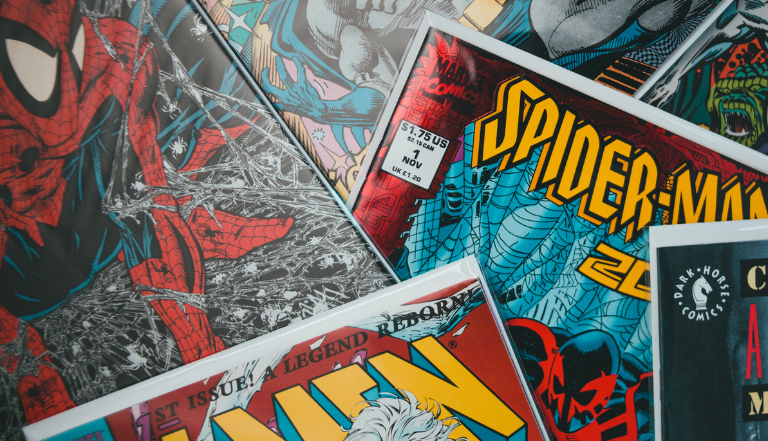Following the box-office release of the animation marvel that is Spider-Man: Across the Spider-verse, conversations around the impact of Generative AI on the future of the animation industry have re-ignited, with particular fears over both the infringement of pre-existing works by AI, and whether animators may be left redundant if AI tools allow for the same quality of animation to be produced both quicker and cheaper than by humans. So far, AI-generated art has mainly been confined to surreal mashups on social media (see "Harry Spotter - The Boy Who Lifted"), though advancements in the technology may allow for far more sophisticated works to be generated at the touch of a button in the future. These fears were not helped by Netflix Japan's recent release of a controversial short anime film on their platform that was produced using AI-generated art.
Though for co-writer and producer of Across the Spider-verse, Christopher Miller, the idea that Gen AI will replace the creative talent of human animators is unconvincing. He suggests "the AI isn't going to generate something new and original. It's going to just do an imitation of the things that came before it. It's our job as humans to keep making things new". While it is true that Gen AI systems are taught via text and data mining ("TDM") of existing works like text, artwork, photographs or music, the products generated are in some jurisdictions now considered original works in their own right where there is sufficient creative input from the user. The AI is therefore able (and is likely to be increasingly able) to produce original and creative content, so long as the instructions and input are sufficiently creative themselves. Given this, rather than ultimately replacing animators, it seems likely the industry will simply evolve to make use of AI systems to increase productivity and efficiency. Human creativity is not so easily replaced.
On the other hand, the infringement of existing copyrighted works - either directly or unintentionally - by both the developers of the AI systems and the users themselves is more pressing, and seems unlikely to be fixed without regulatory intervention.
Starting with the input, the huge amount of data used to train the AI systems (much of which is protected by copyright) is provided without the consent of the original artists, nor are they paid or credited. The use of these protected works without permission has in fact already seen the makers of two popular text-to-art AI models, Midjourney and Stable Diffusion, subject to claims of "brazen [copyright] infringement" in the US. Decisions in these cases will be fascinating given the lack of precedents determining how such claims of infringement are perceived by the Courts. It can be almost guaranteed however that these will not be the last claims of infringement by AI tools heard by the Courts. It is likely that various national regulation will be introduced to exercise a greater degree of control on the current landscape, though what form such regulation will take is not yet clear. Much like the Spotify and Apple Music models of music streaming in the wake of litigation concerning Napster, perhaps regulation will end in an opt-in model of licensing, in which artists can consent to their works being added to the training data for AI tools, for a fee or percentage share of the revenues generated.
Alternatively, the framework for an opt-out model may already be in place for EU Member States as a result of the European Union’s ‘Copyright in the Digital Single Market Directive 2019’. The Directive provided harmonised exceptions for breach of copyright in the act of text and data mining, such as allowing for fair use of “lawfully accessible works” in TDM, unless “expressly reserved by their right holders in an appropriate manner”. This Directive, depending on how it is implemented by the various EU Member States, may prompt some form of collective action by creatives to expressly communicate an opting-out on mass of use of their copyrighted works in TDM for AI systems, or as with the suggested opt-in model, some form of financial remuneration in exchange for not opting-out.
The artistic output generated by AI tools like Midjourney and Stable Diffusion can likewise infringe existing copyright if a substantial part of the earlier work is replicated, though current legal provisions (such as under the UK Copyright Designs and Patents Act 1988) should provide complainants with an appropriate mechanism to address infringements. The key difficulty here is in identifying by whom the infringement action should be brought. As infringement proceedings must be brought by the owner of the copyright work, the owner must be identified. But who owns the artistic copyright work generated by AI? Does the user of the AI own the art produced by the system, or is it the maker of the system itself? The legal position on ownership of copyright generated via AI currently differs depending on the jurisdiction; while the UK considers ownership of copyright generated by AI to be in the hands of the user (so long as there is original and creative input from that user in the instructions required to generate the art), the US Copyright Office will only currently accept the existence of copyright in works created by a human author and not via an autonomous AI tool.
As the technology develops, the various legal positions may also be liable to change in the future, therefore it is recommended that IP rights-holders (and legal professionals alike) remain diligent.
It seems certain that greater checks and balances will be introduced in the coming months and years in order to ensure that the rights of creators cannot be so readily infringed. While Gen AI tools may revolutionise how many professions operate in the future, their advancement cannot be at the cost of existing creators.
With great power, comes great responsibility.



